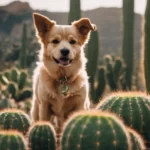Rats, often associated with nocturnal activities, are a common concern in both urban and rural areas. There is a general perception that rats strictly prefer the cover of darkness for their activities. However, the question arises: do rats come out during the day as well? This article explores the behavior of rats, focusing on their activity patterns and the factors influencing their presence during daylight hours.
Rat Behavior
Rats are intelligent and adaptable creatures, known for their ability to thrive in a variety of environments. Typically, rats are nocturnal, meaning they are most active at night. This nocturnal behavior is primarily a survival strategy, as moving around under the cover of darkness reduces the chance of encountering predators. Rats are also more sensitive to light, which makes nighttime an ideal period for their activities, including foraging for food and social interactions.
Factors Influencing Daytime Activity in Rats
While rats are predominantly nocturnal, certain conditions can prompt them to venture out during the day. One primary factor is food scarcity. If food sources are limited, rats may risk daylight exposure to find sustenance. Disturbances in their usual nocturnal routes or habitats, such as construction work or predator activities, can also disrupt their normal patterns, leading them to be active during the day. Additionally, a high population density in a particular area might force some rats to forage during less competitive times, like daytime. This shift in behavior can be a sign of an overpopulation issue within a rat community.
Observing Rats During the Day
Daytime sightings of rats can be more than just random occurrences; they can be indicators of specific environmental factors or changes in rat behavior. Signs of rat activity during the day include seeing rats in open areas, hearing noises in walls or ceilings, and finding rat droppings or marks along baseboards and walls. These signs can help in identifying a rat presence in an area, which is crucial for effective control measures. It’s important to note that while occasional sightings might not indicate a major problem, regular sightings of rats during the day could suggest an infestation or a significant population nearby.
The Significance of Daytime Rat Sightings
Seeing rats during the day can have several implications. Firstly, it may indicate a large rat population in the area, as competition for food and space forces some individuals to forage during less ideal times. Secondly, it could be a sign of a disturbance in their natural habitat or nesting areas, prompting them to seek new shelters and food sources. Additionally, in some cases, sick or injured rats, which are less able to compete for food with healthier rats at night, might be seen during the day. Understanding these implications is crucial for homeowners and pest control professionals, as it helps in assessing the extent of a rat problem and in devising effective management strategies.
Managing Rat Infestations
Effective management of rat infestations requires a comprehensive approach. If you observe rats during the day, it’s important to assess and address factors that may be attracting them. This includes securing food sources, such as tightly sealing garbage bins and not leaving pet food outdoors. Eliminating potential nesting sites, such as cluttered areas or overgrown vegetation, can also deter rats from settling in. In addition, sealing entry points in buildings and homes is crucial to prevent rats from gaining access. If an infestation is suspected, it may be necessary to employ trapping, baiting, or professional pest control services to effectively manage the population.
Preventative Measures to Reduce the Likelihood of Rat Infestations
Prevention is key in managing potential rat infestations. Regular maintenance of your property can significantly reduce the appeal to rats. This includes routine checks for and repair of any holes or cracks in the foundation, walls, and roofing, which could serve as entry points. Proper sanitation practices, such as regularly disposing of garbage and keeping outdoor dining areas clean, are essential. Additionally, managing outdoor environments by trimming overgrown vegetation and clearing debris can remove potential hiding spots and nesting sites for rats.
Health Risks Associated with Rats
It’s important to recognize that rats can pose health risks. They are known carriers of various diseases, which can be transmitted to humans directly through contact or indirectly through ticks, mites, or fleas that have fed on an infected rat. Therefore, seeing rats during the day, which could indicate a higher population density, should be taken seriously. Implementing effective control and prevention measures not only minimizes property damage but also reduces health risks.
Conclusion
In summary, while rats are typically nocturnal, various environmental and social factors can lead to their daytime activity. Regular sightings of rats during daylight hours can be an indicator of overpopulation, food scarcity, or habitat disturbance. By understanding rat behavior and taking proactive measures, you can effectively manage and prevent rat infestations. This includes maintaining proper sanitation, securing your property, and seeking professional pest control services when necessary. Coexisting with wildlife in urban and rural settings requires a balance of vigilance, understanding, and action to ensure both human and environmental health.



